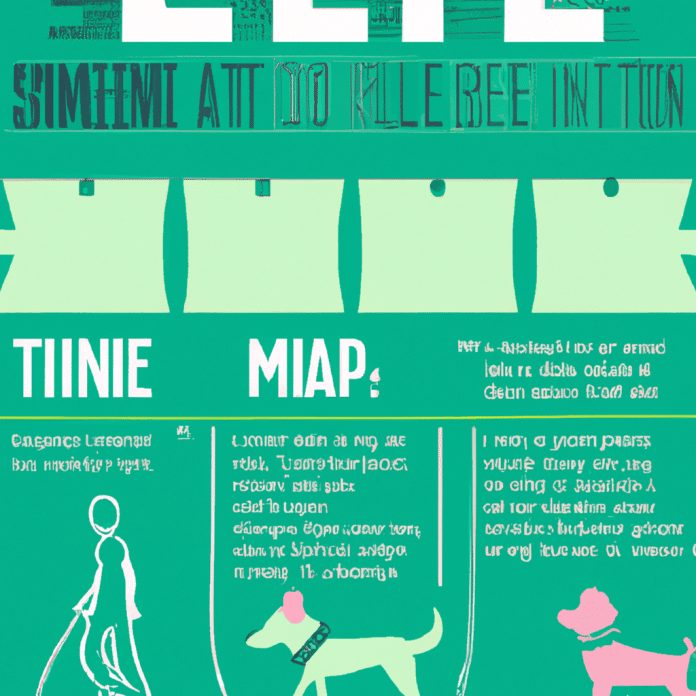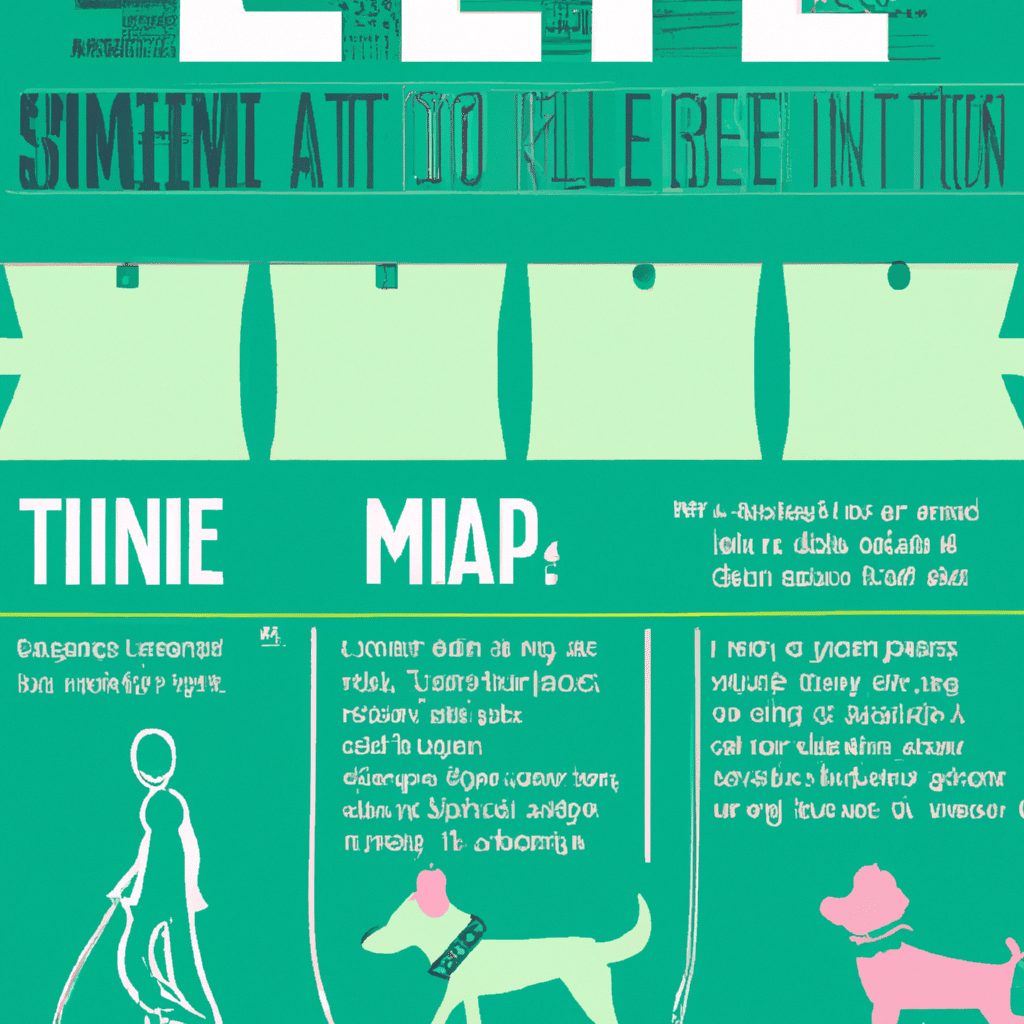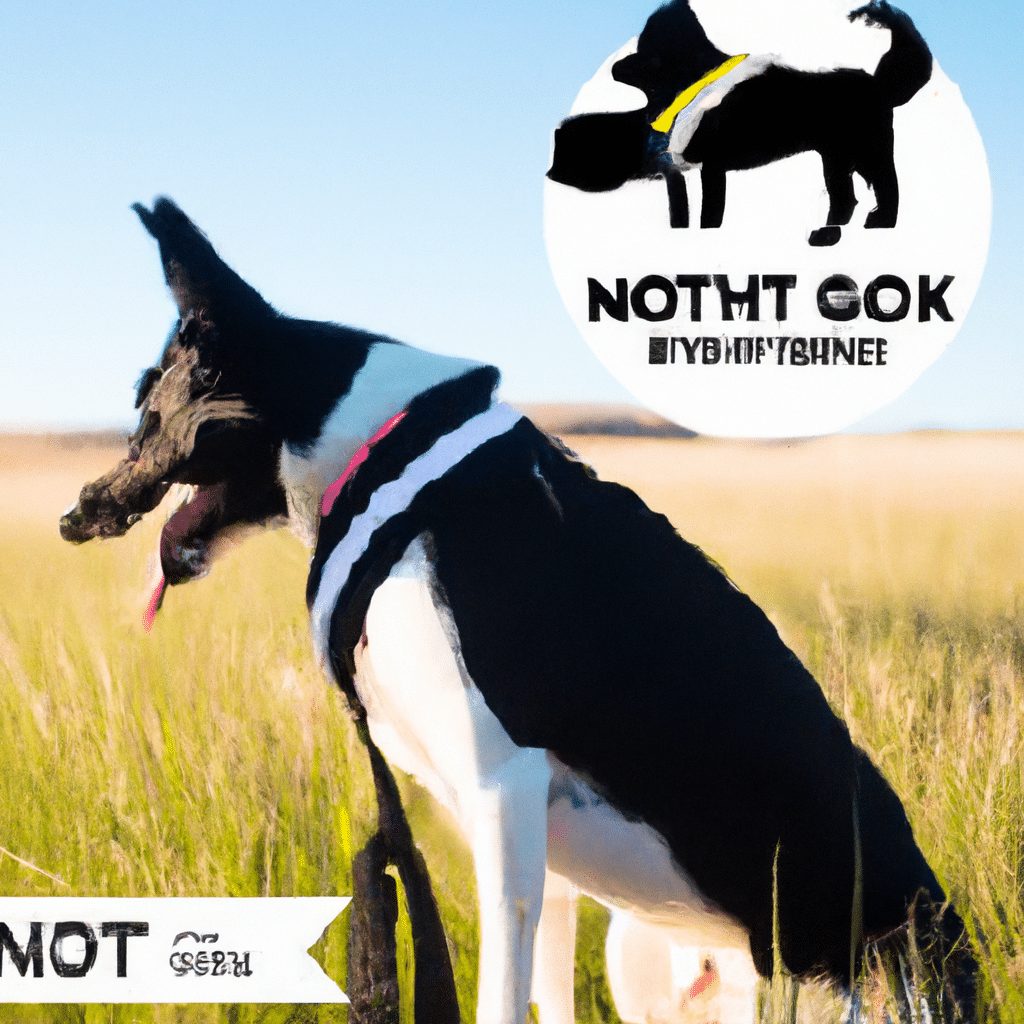Running with your dog can be a fun and fulfilling activity for both of you, but finding the right dog harness is crucial to ensure a safe and comfortable experience. With so many options available in the market, it can be overwhelming to make a choice. That’s why we’ve done the research for you and narrowed down the top dog harnesses that are specifically designed for running. In this article, we will explore the features, benefits, and considerations of each harness, helping you make an informed decision so you and your furry friend can hit the trails with confidence.
Types of Dog Harnesses for Running
When it comes to running with your furry companion, having the right dog harness can make all the difference in ensuring a safe and enjoyable experience. There are several types of harnesses specifically designed for running, each with its own unique features and advantages. Let’s take a closer look at the most popular options:
Front-Clip Harness
A front-clip harness is designed with a leash attachment point on the chest area of the dog, instead of the traditional back attachment. This design helps to discourage pulling, as any forward motion will result in the dog being redirected towards the owner. Front-clip harnesses are great for dogs with a tendency to pull or those who require more control during a run.
Back-Clip Harness
Back-clip harnesses, on the other hand, have the leash attachment point positioned on the back of the dog, similar to regular walking harnesses. While these may not provide as much control as front-clip harnesses, they are more comfortable for dogs who are already well-behaved and do not pull excessively. Back-clip harnesses are a popular choice for dogs who are used to running alongside their owners without any issues.
No-Pull Harness
For dogs that have a persistent pulling habit, a no-pull harness can be a game-changer. These harnesses often have a unique design that includes chest straps and tightening or padding around the armpits, creating discomfort or minor pressure when the dog pulls. Consequently, this discourages the behavior and helps to establish better walking or running manners.
Factors to Consider
Before selecting the right harness for running, it’s crucial to consider various factors to ensure a proper fit and maximum comfort for your furry friend. Here are the key factors to take into account:
Size and Fit
Choosing the correct size is essential to ensure that the harness fits snugly and securely on your dog. Measure your dog’s girth and refer to the manufacturer’s sizing chart to determine the correct size. A well-fitting harness should allow for a comfortable range of motion without being too loose or too tight.
Comfort and Padding
Look for a harness with ample padding in areas that come into contact with your dog’s body. Padding helps to prevent chafing or discomfort during long runs, providing your pooch with a comfortable experience. Pay attention to features such as breathable material and adjustable straps to enhance overall comfort.
Durability and Material
Running can be an intense and physically demanding activity, so it’s crucial to choose a harness made from durable materials that can withstand regular use. Look for materials such as nylon or neoprene, which are known for their strength and resistance to wear and tear. Additionally, consider harnesses with reinforced stitching to ensure longevity.
Visibility and Reflective Features
When running outdoors, especially during early morning or evening hours, visibility is essential for the safety of both you and your dog. Opt for a harness with reflective or high-visibility strips that help make you and your furry companion more visible to oncoming traffic or pedestrians. This feature is especially important if you frequently run in low-light conditions.
Ease of Use and Adjustability
A user-friendly harness with easy-to-use buckles and adjustable straps can make all the difference, especially when you’re in a hurry to hit the pavement. Look for a harness that is quick and simple to put on and take off, as well as one that offers a wide range of adjustability to accommodate your dog’s individual measurements.
Top 5 Dog Harnesses for Running
With so many dog harnesses available on the market, it can be challenging to choose the best one for your running adventures. Here are our top five picks for the best dog harnesses for running:
1. RUFFWEAR Front Range All-Day Adventure Harness
The RUFFWEAR Front Range All-Day Adventure Harness is a popular choice among active dog owners. Its front-clip design allows for better control and discourages pulling, while the padded chest and belly panel provide comfort during longer runs. The harness also features reflective trim and a convenient pocket for storing small essentials.
2. Kurgo Tru-Fit Smart Dog Walking Harness
The Kurgo Tru-Fit Smart Dog Walking Harness is another excellent option for running enthusiasts. This harness is not only great for walking, but it also features a back-clip design that works well for running. The padded chest plate and adjustable straps ensure a secure and comfortable fit, while the sturdy construction guarantees durability.
3. Rabbitgoo No-Pull Dog Harness
For dogs that need help with pulling, the Rabbitgoo No-Pull Dog Harness is a fantastic choice. Its unique design includes front and back leash attachment points, as well as adjustable straps and an ergonomic handle for extra control. With its no-pull feature and reflective material, this harness is an ideal option for both daytime and nighttime running.
4. Chai’s Choice Outdoor Adventure Dog Harness
The Chai’s Choice Outdoor Adventure Dog Harness is a versatile harness perfect for an active lifestyle. It boasts a lightweight and durable construction, with a chest attachment point for improved control. The harness also features reflective material, adjustable straps, and a comfortable padded design, making it an excellent choice for running adventures.
5. Julius-K9 IDC Powerharness
Lastly, the Julius-K9 IDC Powerharness is a top-rated harness known for its high-quality construction and innovative design. This harness features an ergonomic handle, robust buckles, and adjustable straps for a secure fit. It is also equipped with reflective elements, ensuring visibility during nighttime runs.
How to Properly Fit a Dog Harness
Having the right harness for running is not enough; it is equally important to ensure a proper fit to guarantee your dog’s safety and comfort. Here’s a step-by-step guide on how to properly fit a dog harness:
Measurements and Sizing
Before purchasing a harness, accurately measure your dog’s girth using a flexible measuring tape. Measure around the widest part of the ribcage, just behind the front legs. Refer to the manufacturer’s sizing guide to select the appropriate size based on your dog’s measurements.
Adjusting the Straps
Once you have the right size harness, it’s time to adjust the straps to ensure a secure fit. Loosen all the straps completely and place the harness over your dog’s head, with the chest strap sitting comfortably against the chest. Adjust the straps one by one, starting with the chest strap, then the belly strap, and finally the back strap. Make sure each strap is snug but not overly tight.
Checking for Comfort and Restriction
Once the harness is securely fastened, check for any signs of discomfort or restriction. Ensure that the harness does not rub against the skin or hinder your dog’s natural range of motion. If you notice any redness, chafing, or difficulty in movement, readjust the straps accordingly until your dog is comfortable.
Testing the Fit with a Trial Run
Before embarking on a full-fledged running session, it’s essential to test the fit of the harness with a trial run. Take your dog for a short walk or jog around the neighborhood and observe how the harness functions. Watch for any signs of slipping, twisting, or discomfort. If needed, make further adjustments to achieve a secure and comfortable fit.
Benefits of Running with a Dog Harness
Running with your dog can be a rewarding experience, and using a harness specifically designed for running provides numerous benefits. Here are some advantages of running with a dog harness:
Improved Control and Safety
A well-fitted running harness offers better control over your dog’s movements, ensuring their safety on the road or trail. With a harness, you have a secure attachment point to connect the leash, allowing you to guide your dog and prevent any sudden movements or distractions.
Reduced Strain on the Neck and Spine
Using a harness for running helps distribute the pulling force across your dog’s body, rather than concentrating it on their neck and throat like a traditional collar. This reduces the risk of injuries or strain to your dog’s neck, spine, or trachea, making it a much safer option for running.
Prevention of Escapes and Pulling
Dogs that tend to pull or have a strong prey drive can sometimes slip out of a regular collar, leading to potential escapes or accidents. A well-fitted running harness offers a secure fit and minimizes the risk of escape, providing you with peace of mind during your running sessions.
Enhanced Bonding and Communication
Running with your dog can strengthen the bond between you and your furry friend. Using a harness instead of a collar allows for better communication, as the harness provides a point of contact that is more comfortable for your dog. This increased connection can lead to better understanding and cooperation while enjoying your runs together.
Training Tips for Running with a Harness
Introducing your dog to running with a harness requires patience and proper training. Here are some helpful tips to make the transition smoother:
Introduction to the Harness
Start by introducing the harness to your dog in a positive and calm environment. Allow your dog to sniff and explore the harness before attempting to put it on. Gradually associate the harness with positive experiences, such as treats or playtime, to create a positive association.
Positive Reinforcement and Rewards
When your dog is comfortable with the harness, use positive reinforcement techniques to encourage them to wear it. Reward your dog with treats and praise when they let you put the harness on and walk around wearing it. This will help your dog associate the harness with pleasurable experiences.
Gradual Increase in Running Intensity
Just like humans, dogs need time to build up their endurance for running. Start with short, slow-paced runs and gradually increase the distance and intensity over time. Pay attention to your dog’s cues and adjust your running routine accordingly. It’s essential to be mindful of your dog’s limitations and not push them too hard too soon.
Appropriate Leash Length and Positioning
Choose a leash that is appropriate for running and attach it to the harness as instructed by the manufacturer. Ensure that the leash is a comfortable length for both you and your dog, providing enough space for movement without any unnecessary slack. Consider using a hands-free leash system for added convenience and freedom of movement.
Proper Running Etiquette with a Dog
When running with your dog, it’s important to follow proper running etiquette to ensure a positive experience for everyone involved. Here are some guidelines to keep in mind:
Leash Laws and Regulations
Before hitting the trails or running in public areas, familiarize yourself with local leash laws and regulations. Ensure that you comply with all applicable rules, as they are in place to maintain safety and order.
Choosing Dog-Friendly Routes
Select running routes that are dog-friendly and allow dogs on leashes. Avoid areas where dogs are not permitted or where off-leash dogs are prevalent. Look for routes with wide paths or designated pet-friendly areas to ensure plenty of space for both you and your furry companion.
Respecting Other Runners and Walkers
When running with your dog, it’s important to be considerate of other runners, walkers, or cyclists who may be sharing the same path. Keep your dog on a short leash, stay to the right side of the path, and be aware of your surroundings to avoid any accidental collisions or disruptions.
Cleaning Up After Your Dog
Always carry waste bags or poop scoops when running with your dog. Be responsible and clean up after your dog’s bathroom breaks, disposing of waste properly in designated receptacles. This helps to maintain a clean and hygienic environment for others to enjoy.
Frequently Asked Questions
Do I need a special harness for running with my dog?
While it’s not mandatory, using a harness specifically designed for running offers several advantages over a regular walking harness or collar. Running harnesses are designed to distribute pulling force evenly across your dog’s body, reducing the risk of injury or strain. They also provide better control and stability during high-energy activities.
Can I use a regular leash with a running dog harness?
It is generally recommended to use a leash that is suitable for running with a dog harness. Regular leashes may not be designed to withstand the intensity and sudden movements associated with running. Look for a leash specifically designed for running or choose a hands-free leash system for added convenience and safety.
How do I differentiate between a front-clip and a back-clip harness?
Front-clip harnesses have a leash attachment point located on the chest area of the dog, whereas back-clip harnesses have the attachment point on the back. To identify the type of harness, look for the presence or absence of a D-ring or attachment loop on the chest area. Additionally, front-clip harnesses often have a horizontal strap across the chest, while back-clip harnesses typically have a vertical strap down the back.
Can I use a harness for high-impact activities like agility training?
While harnesses are generally suitable for running and walking activities, it is important to consider the specific requirements of high-impact activities like agility training. Some harnesses are specifically designed for such activities and provide additional support and stability. Consult with a professional trainer or veterinarian to determine the best harness for your dog’s specific needs.
Should I consult a veterinarian before using a running harness?
If you have any concerns about using a running harness for your dog, it’s always a good idea to consult with a veterinarian. They can assess your dog’s overall health, physical condition, and any specific needs or considerations to ensure that using a running harness is safe and suitable for your furry friend.
Conclusion
Choosing the right dog harness for running is essential for both your dog’s safety and your own peace of mind. By considering factors such as size and fit, comfort and padding, durability and material, visibility and reflective features, and ease of use and adjustability, you can find the perfect harness for your running adventures. Remember to properly fit the harness, train your dog gradually, and follow proper running etiquette to create a positive and enjoyable running experience for both you and your furry companion. So, grab your running shoes, leash up your dog, and hit the road for a fun-filled and active journey together!











































